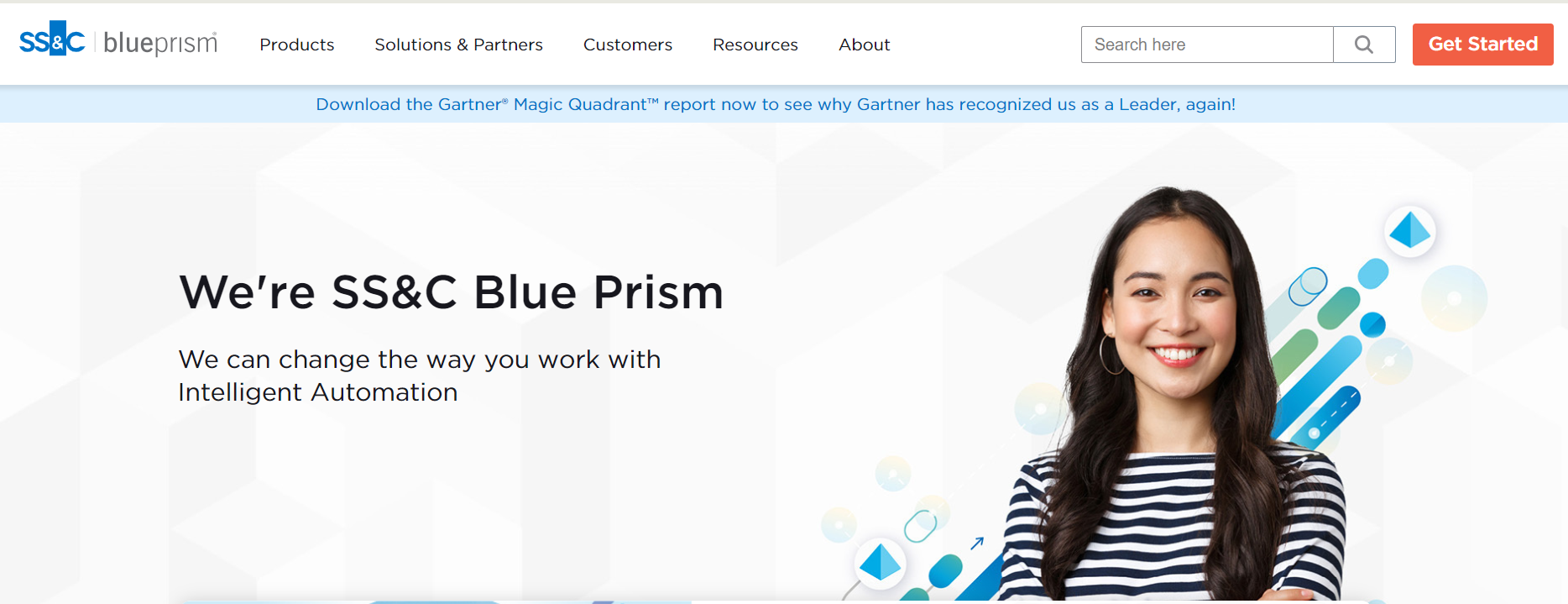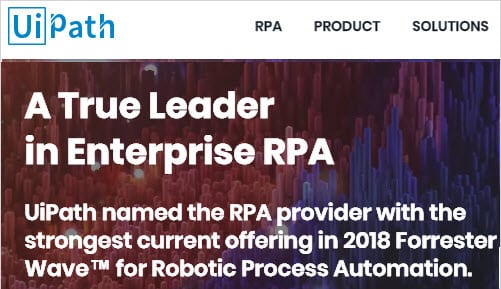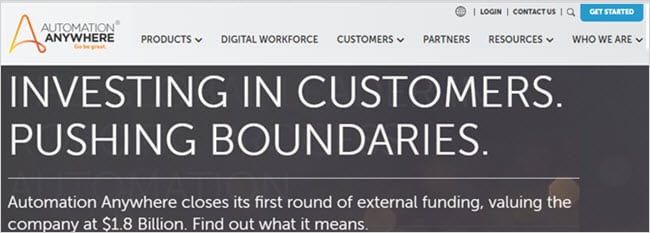The business world is extremely fast-paced, and organizations constantly seek ways to enhance productivity, reduce costs, and minimize errors. Robotic Process Automation (RPA) has emerged as a powerful solution to achieve these goals.
RPA tools automate repetitive and time-consuming tasks, freeing up employees to focus on more strategic and value-added activities. With a plethora of RPA tools available in the market, choosing the right one can be a daunting task.
In this comprehensive guide, we will explore the top RPA tools and help you make an informed decision based on your organization’s unique requirements.
Understanding Robotic Process Automation
Robotic Process Automation, or RPA, is a technology that uses software robots, or bots, to automate repetitive tasks and processes. These bots mimic human actions by interacting with various systems and applications, such as data entry, screen scraping, and decision-making. RPA offers numerous benefits, including increased efficiency, improved accuracy, cost savings, and scalability. It is widely used across banking, insurance, healthcare, retail, and manufacturing industries.
Key Capabilities of RPA Tools
Before delving into the best RPA tools in the market, it’s essential to understand the key capabilities that every Robotic Process Automation system should possess. These capabilities include:
- Communication with other systems: Robotic Process Automation tools should be able to communicate with other systems either through screen scraping or API integration. This enables seamless interaction and data exchange between different applications.
- Decision-making: Bots should have the ability to make decisions based on predefined rules or algorithms. This allows them to perform tasks autonomously and handle exceptions effectively.
- Bot programming interface: RPA tools should provide a user-friendly interface for bot programming. This enables users with varying technical skills to design, configure, and manage bots without extensive programming knowledge.
Types of RPA
RPA can be classified into three main types based on the level of human intervention required:
- Attended automation: These RPA tools require human intervention while performing automation processes. They work alongside employees, assisting them in their daily tasks and enhancing productivity.
- Unattended automation: These RPA tools are intelligent and can perform tasks without human intervention. They are typically used for high-volume, rule-based processes and can operate 24/7.
- Hybrid RPA: As the name suggests, hybrid RPA tools combine the capabilities of both attended and unattended automation. They offer flexibility and can adapt to different scenarios, making them suitable for a wide range of business processes.
Industries Leveraging Robotic Process Automation
RPA has gained significant traction across various industries. Let’s take a closer look at how different sectors are utilizing RPA to streamline their operations:
Healthcare Industry
In the healthcare industry, RPA tools are used to automate tasks such as appointment scheduling, patient data entry, claims processing, billing, and more. This helps healthcare providers improve efficiency, reduce errors, and enhance patient experiences.
Retail Industry
For the retail sector, RPA tools play a crucial role in updating orders, sending notifications, shipping products, tracking shipments, managing inventory, and automating customer support. These tools enable retailers to provide a seamless customer experience and optimize their supply chain processes.
Telecommunications Industry
In the telecommunications industry, RPA tools are utilized for various tasks including monitoring network performance, fraud data management, updating customer data, and automating billing processes. By automating these processes, telecom companies can ensure data accuracy and improve customer service.
Banking Industry
RPA has become a game-changer for the banking sector. Banks use RPA tools to automate repetitive tasks, ensure accuracy in data entry, enhance security, and improve overall operational efficiency. RPA enables banks to streamline processes such as customer onboarding, loan processing, fraud detection, and regulatory compliance.
Insurance Industry
Insurance companies leverage RPA tools to automate manual and time-consuming processes. RPA streamlines tasks such as data entry, claims processing, policy administration, underwriting, and customer service. By automating these processes, insurers can reduce costs, improve accuracy, and enhance customer satisfaction.
Manufacturing Industry
RPA tools are widely adopted in the manufacturing industry to streamline supply chain procedures. These tools automate tasks such as material billing, administration, customer services, reporting, and data migration. RPA helps manufacturers optimize their operations, reduce errors, and improve productivity.
Choosing the right RPA tool can be overwhelming, given the wide array of options available. To simplify your decision-making process, we have analyzed and compared the top RPA tools based on their features, user-friendliness, scalability, maintenance and support, and more. Let’s explore the best RPA tools in the market:
#1: Nanonets
In the world of document management, traditional OCR tools often rely on fixed templates which can struggle to efficiently handle semi-structured documents. Fortunately, a new wave of machine learning-driven solutions has emerged, offering APIs for extracting key-value data from documents. However, integrating these solutions with legacy enterprise systems can be challenging due to their lack of openness to external APIs.
This is where the synergy of Robotic Process Automation (RPA) and Machine Learning (ML) comes into play, paving the way for hyper-automation. By leveraging RPA tools in tandem with ML capabilities, businesses can tackle intricate tasks such as Document Classification, Extraction, and Optical Character Recognition (OCR).
AI-based OCR software like Nanonets can augment the capabilities of RPA tools when faced with complex documents.
Nanonets scans and interprets documents to find and collect data in context. When combined with traditional RPA tools, it helps users create clever automations for extracting data from even the trickiest documents. This makes RPA tools smarter, as they can understand documents better and work more intelligently, without just following fixed patterns.
Pricing:
- Pro Plan: The Pro plan is priced at $499/month and includes 5,000 pages per month. Beyond that, the costs are $0.10 per page. The Pro plan includes features like auto-capture line items (tables), up to 20 fields, annotation services, customization hours, and more.
- Custom Enterprise Plan: Nanonets also offers a custom plan for enterprises with specific needs. The custom plan requires a specific quote from Nanonets to build and price and includes upper-end features like a dedicated account manager, custom data retention, customized client onboarding, and personalized 1:1 team training.
Does it have a Free Trial? Nanonets offers a free 7-day trial for users to test the software. The free trial allows users to process up to 500 pages for free.
Want to automate repetitive manual tasks? Check out Nanonets RPA software. Extract data from invoices, identity cards or any document on autopilot!
#2: SS&C BLUE PRISM RPA

Blue Prism is a comprehensive RPA tool that offers all core capabilities required for efficient automation. It can work on any platform and with any application, making it suitable for medium and large organizations. Blue Prism supports multi-environment deployment models and provides robust security for network and software credentials. It is compatible with common packaged apps like SAP and Oracle. Blue Prism offers high-speed execution and platform independence, but programming skills are required to utilize its full potential.
Nanonets integrates with Blue Prism, read our blog on Invoice processing using Blue Prism RPA to find out more.
Pros:
- High-speed execution and platform independence
- Multi-environment deployment and robust security features
- Ease of use and no hassle in controlling Bot execution
- SAP automation stability compared to any other automation tool
- One of the largest legacy players in the market
- Robust documentation support
Cons:
- Programming skills are necessary for optimal use
- High pricing compared to other RPA tools
- Screen Scraping with some applications isn’t always reliable.
- Technical support is often an issue since product support is a higher priced premium feature
- Limited OCR functionality
Pricing: For Blue Prism RPA, one concurrent digital worker starts at $13,000, after which they have consumption based pricing.
Does it have a Free Trial? Yes, they do.
#3: UiPath

UiPath is a popular RPA tool known for its user-friendly interface and ease of use. It supports automation projects of any size and provides drag-and-drop functionality for easy process design. UiPath supports automation of front-end operations, as well as back-end operations involving structured and unstructured data. It offers security features, scalability, and an open platform for integration. UiPath does not require programming skills, making it accessible to a wide range of users.
UiPath’s platform is designed to scale as organizations grow their automation initiatives. It can handle a large number of robots and processes while maintaining performance.
Nanonets is a Silver-certified UiPath partner and you can download the Uipath connector right off the marketplace and get started.
Pros:
- UiPath’s visual development environment, UiPath Studio, employs a user-friendly interface that allows users to create automation workflows without extensive programming knowledge.
- It integrates well with various applications, databases, APIs, and legacy systems, allowing seamless automation within existing IT ecosystems.
- The UiPath Orchestrator provides a centralized platform for deploying, managing, and monitoring robots, facilitating better control over automation processes.
- UiPath boasts an active community of developers, professionals, and partners who contribute to the ecosystem by sharing resources, best practices, and reusable components.
Cons:
- Despite its user-friendly interface, more complex automation scenarios might still require a learning curve, especially for users with limited technical backgrounds.
- The costs associated with licensing and implementing UiPath can be a concern for some organizations, especially smaller ones.
- While UiPath supports both attended and unattended automation, highly complex and dynamic unattended scenarios might require additional efforts to design and manage effectively.
Pricing: 25 licenses, 1 attended bot, 1 unattended bot, 1 action center, and 1 orchestrator starting at $420/month.
Does it have a Free Trial? Yes, they have a 60-day free trial.
#4: Automation Anywhere

Automation Anywhere is a comprehensive RPA tool that provides all core capabilities required for efficient automation. It offers on-premise and cloud services, making it flexible for different deployment models. Automation Anywhere provides bank-grade security features, real-time reports and analytics, and platform independence. It offers user-friendly automation for medium and large organizations. However, Automation Anywhere’s IQBot functionality, which focuses on cognitive capabilities, needs improvement.
Pros:
- It supports both attended (human-assisted) and unattended (robotic) automation, and can automate a variety of processes, from simple tasks to complex workflows.
- Automation Anywhere provides a marketplace called Bot Store where users can access pre-built automation components, helping to accelerate the automation development process.
- Automation Anywhere is designed to scale as organizations grow, supporting a large number of bots and processes.
Cons:
- The cost of licensing Automation Anywhere can be a concern for some organizations, especially smaller ones or those new to RPA.
- Automation Anywhere is most effective for standardized and rule-based processes. Handling tasks with significant variability or human judgment can be more challenging.
Pricing: Automation Anywhere’s pricing for SMEs is the Cloud Starter Pack priced at $750/month and includes a bot creator, control room and an unattended bot.
Does it have a Free Trial? We could not directly locate a free trial option on the website. If it exists, they’ve hidden it well.
#5: Kofax Kapow / RPA
Kofax Kapow, now known as Kofax RPA, is a robotic process automation (RPA) software developed by Kofax, a company specializing in intelligent automation solutions. Kofax RPA enables organizations to automate a wide range of tasks and processes that are typically manual, repetitive, and rule-based. It’s designed to streamline business operations, reduce errors, and improve efficiency by allowing software robots (also known as bots) to perform tasks that humans would otherwise perform.
It doesn’t require changes to existing IT systems or applications. Instead, it interacts with the user interface (UI) layer of applications, making it suitable for automating legacy systems that lack APIs.
Pros:
- Kofax RPA’s strong capabilities in web data extraction make it useful for collecting data from various websites and online sources, which can be valuable for competitive analysis, market research, and more.
- The platform’s ability to automate processes without making changes to underlying systems is advantageous, especially when dealing with legacy applications that lack APIs.
- Kofax RPA’s analytics and reporting features provide insights into process performance, helping organizations identify areas for optimization and measure the impact of automation.
Cons:
- Setting up the platform and configuring automation workflows can be complex, particularly for larger or more intricate processes.
- Automations based on UI interactions can be sensitive to changes in the user interface, potentially leading to failures when the UI changes.
- If Kofax RPA integrates with third-party tools or services, ensuring consistent security across these integrations can be a challenge, especially if the integrations have varying security postures.
Pricing: Could not find accurate information on the company website.
Do they have a Free Trial? Same as above
Choosing the right RPA tool is crucial for successful implementation. Here are some key factors to consider when selecting an RPA tool for your organization:
- Platform independence: Ensure that the RPA tool is compatible with your existing systems and can work across different platforms, such as Windows, Mac, and web-based applications.
- User-friendliness: Look for an RPA tool that offers a user-friendly interface, drag-and-drop functionality, and easy-to-use features. This will enable both technical and non-technical users to design and manage automation processes effectively.
- Cost: Evaluate the cost-effectiveness of the RPA tool, including licensing fees, implementation costs, and ongoing maintenance and support expenses. Consider the scalability of the tool and its ability to handle increasing volumes of automation.
- Industry-specific capabilities: Some RPA tools are tailored to specific industries and offer industry-specific functionalities. Assess whether the tool aligns with your industry requirements and can address your unique challenges.
- Maintenance and support: Consider the level of support provided by the RPA tool vendor, including documentation, training resources, and customer support channels. Check if the vendor offers regular updates and enhancements to keep up with evolving technology.
- Tool Smartness: Ideally, the RPA tool should act as an end-user, mimicking human behavior and understanding natural language inputs. Look for features that enhance the tool’s cognitive capabilities and its ability to handle unstructured data.
Now that we have explored the key considerations for selecting an RPA tool, let’s dive into the top RPA tools in the market and their unique features.
Nanonets online OCR & OCR API have many interesting use cases that could optimize your business performance, save costs and boost growth. Find out how Nanonets’ use cases can apply to your product.
Conclusion
Robotic Process Automation (RPA) is revolutionizing the way businesses operate, enabling automation of repetitive tasks and improving overall efficiency. With a wide range of RPA automation tools available in the market, organizations can choose the best fit for their unique requirements.
This comprehensive RPA tools list includes the best tools in the market. Each offers a range of features, scalability, and user-friendliness. By selecting the right RPA tool, organizations can streamline their business processes, reduce costs, and enhance productivity.
Explore these tools, consider your organization’s needs, and embark on a successful RPA journey.






